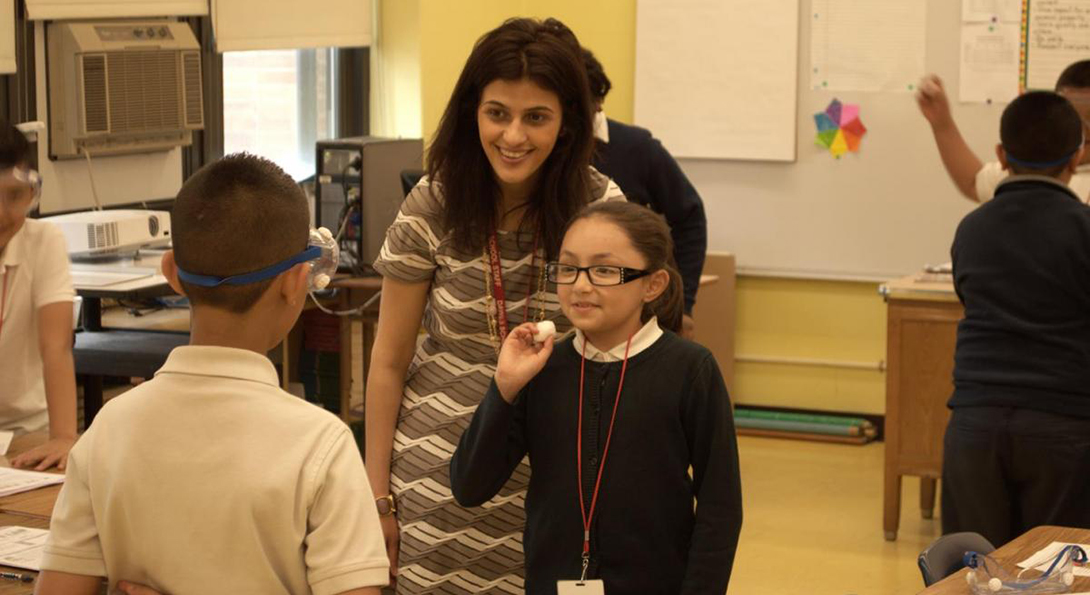Latino Scientists at Work in Alumna’s Classroom

When Amani Ghusein asks her fourth grade science students to draw a picture of a scientist, most pen a caricature of a mad scientist.
Few draw an illustration of themselves.
“We build the idea that you are a scientist,” Ghusein said. “They enjoy science and the hands-on part of it, but you have to make it important to them, you reinforce it in everyday life, that science is important to any career you choose.”
At Dawes Elementary in Chicago’s Ashburn neighborhood on the far southwest side, with a predominantly Latina/o student population, Ghusein’s science classroom sees a steady stream of 4th-8th graders over the course of the day. Her lessons are hands-on, interactive and designed to make students see and feel the science of life around them.
On a gray spring day, Ghusein, BA Urban Education: Elementary Education '04, is working on that feeling of science as a chaotic scene unfolds. Looking somewhat like the mad scientists they have drawn, her students are paired up wearing protective goggles throwing cotton balls at each other’s eyes to physically feel the eyes’ reflexive blinking. While there is a lot of other learning going on—how fast one can throw a cotton ball, for example, or how to monopolize the ball from your partner, the students clearly feel the science. Even with the goggles on, her students tense up slightly before the ball is thrown and scrunch their eyes closed as the ball kisses the goggles.
“I really understand how critical it is for kids to have the background knowledge to do a hands-on lesson,” Ghusein said. “If you don’t know how or why it works, there’s no purpose to learning. There’s a backwards design of each lesson to know it’s OK to do a fun activity but to formally and informally assess if they know why the concept worked or didn’t.”
That level of critical thinking is the hurdle Ghusein sees her students needing to clear in their progression in STEM education and career fields. Sure, her students become more aware of science careers that exist when she brings in biologists and engineers and other scientists to talk about their careers, but Ghusein says her students need reinforcement that these are career options available to them. Short of their high school years, students understandably may not be thinking about college and careers, but Ghusein believes her role is to show her students they have options for their future, in science and beyond.
“You don’t just have to work in a lab, you can work on a farm, you can collect data,” Ghusein said. “Lessons reinforce you can be successful if you put your mind to it.”
Ghusein creates distinct learning roles in her lessons: some students are architects, others are engineers, still others are testing coordinators. Each step of the way, she reinforces the scientific method and elements of engineering, design and test redesign. A concentrated effort is needed because STEM is not traditionally reinforced at the urban elementary level, particularly with standardized tests stressing success in math and literacy. In literacy, teachers say skills not mastered by the third grade become progressively harder to teach, and Ghusein sees parallels to early science exposure as an indicator of future STEM academic success.